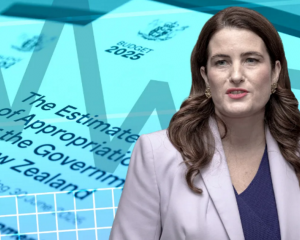
A report just released by the senior doctors' union, A Spreading Problem, tracks the distribution of medical specialists between public and private work using that data for the period June 2022 to June 2024.
It shows:
• Net growth in the private sector (225.1 FTEs) was greater than in the public system (194.7 FTEs).
• Public hospital doctors are working harder: specialist public workforce increased by 4 percent - less than population growth adjusted for ageing (about 5 percent) and much less than patient numbers (11.4 percent)
• In the same period the private/other medical specialist workforce grew by 9.6 percent
• Ten specialities had net loss of doctors employed in the public system, including psychiatry and anaesthesia
• Five more failed to keep pace with population growth
• New Zealand currently short approximately 1800 full-time doctors
Senior doctors walked off the job last week for an unprecedented 24-hour strike after eight months of deadlocked contract negotiations for the Association of Salaried Medical Specialists.
Health NZ has applied to the Employment Relations Authority to do facilitated bargaining to resolve the dispute.
The union said the "lowball" pay offer (which is capped at 1.5 percent of total remuneration), will mean the public system is unable to recruit new doctors, or stop the ones it already has from going overseas or to the private system.
The new report, which updates data published in ASMS' earlier report, Creeping Privatisation, notes Health NZ's own Health Workforce Plan 2023/24 acknowledged "FTE flight to the private sector in some areas …can limit public capacity".
The total medical workforce employed across the public, private and other sectors grew by 5.7 percent in the two years to June 2024, but growth was not evenly distributed.
While the specialist workforce was current divided approximately 70 percent public/ 30 percent private, the balance was shifting.
For small specialities, the loss of even a couple of senior doctors made a huge difference, according to the ASMS report.
"For example, paediatric surgery lost 1.7 FTEs between June 2022 and June 2024, but that represents a 9.1 percent reduction.
"Similarly, the loss of 3.1 FTEs in cardiothoracic surgery amounts to a 12.6 percent loss of cardiothoracic surgeons working in public hospitals."
Even specialities that saw gains in workforce numbers - that is 21 out of 36 areas of medicine - were often coming from "a relatively low numerical base".
"For example, dermatology and rehabilitation medicine are not available publicly in many parts of the country.
"While the increases in emergency medicine are relatively large, that workforce would need an additional 105 specialists to be proportionate with the Australian emergency medicine specialist workforce on a per capita basis in 2023."
The number of patients showing up at Emergency Departments grew 15.5 percent in June 2024 compared with the same period two years previously, while "complexity" (how ill those patients were) grew by 16.7 percent.
"At the same time, recent media reports show all hospital emergency departments failing to assess patients with imminently or potentially life threatening conditions within clinically acceptable timeframes."
Intensive care medicine would have needed an additional 57 specialists to be proportionate with Australia; obstetrics and gynaecology would have needed 31 specialists.
Public-private/other movement
Fifteen of 36 specialities saw a shift in doctors from public to private.
"Collectively those 15 specialities saw an net loss of 25.6 FTEs in public hospitals, while the private/other sectors saw a net gain 177.9 FTEs."
Just over 31 percent of the total hours worked by medical specialists was spent in "Private/Other" services in 2024: mostly in private hospitals or clinical practice, but also universities and government departments.
For surgical specialities, more than a third (35.3 percent) of worked hours were spent in the private sector, and a further 3.5 percent were spent in other employment.
In dermatology, oral and maxillofacial surgery, palliative medicine and ophthalmology, there were more doctors working in private than in the the public system.
Orthopaedic surgeons and radiologists were split 50-50 between the two.
"The division of the specialist workforce across the public-private/other sectors would not necessarily be an issue if there was sufficient specialist workforce capacity to meet health need in the public system," the report said.
"The effects of the workforce split have to be seen in the context of workforce shortages in each speciality, where every specialist moving to the private sector can exacerbate the shortage in the public sector."
The shift towards private health services created "a double disadvantage for those who can't afford health insurance or to self-fund their care" - mostly Māori, Pacific Peoples and lower-income groups - who were already missing out on primary care due to cost.













